Growing Potatoes Small Spaces can feel like an impossible dream, especially if you’re limited to a balcony, patio, or tiny backyard. But guess what? It’s totally achievable, and I’m here to show you how! Forget acres of farmland; we’re talking about maximizing your limited space to yield a surprisingly bountiful potato harvest.
Potatoes have been a staple food for centuries, originating in the Andes Mountains of South America. They’ve nourished civilizations and fueled economies, and now, they can nourish you, straight from your own little garden! Historically, growing potatoes required vast fields, but innovative techniques have made it accessible to everyone, regardless of their living situation.
Why should you bother with growing potatoes small spaces? Well, imagine the satisfaction of harvesting your own fresh, organic potatoes, knowing exactly where they came from and what went into them. Plus, store-bought potatoes just can’t compare to the taste of freshly dug, homegrown spuds. This DIY guide will provide you with simple, effective tricks and hacks to make the process easy and rewarding. We’ll cover everything from choosing the right potato varieties to optimizing your container setup, ensuring you get the most out of your limited space. Let’s get growing!
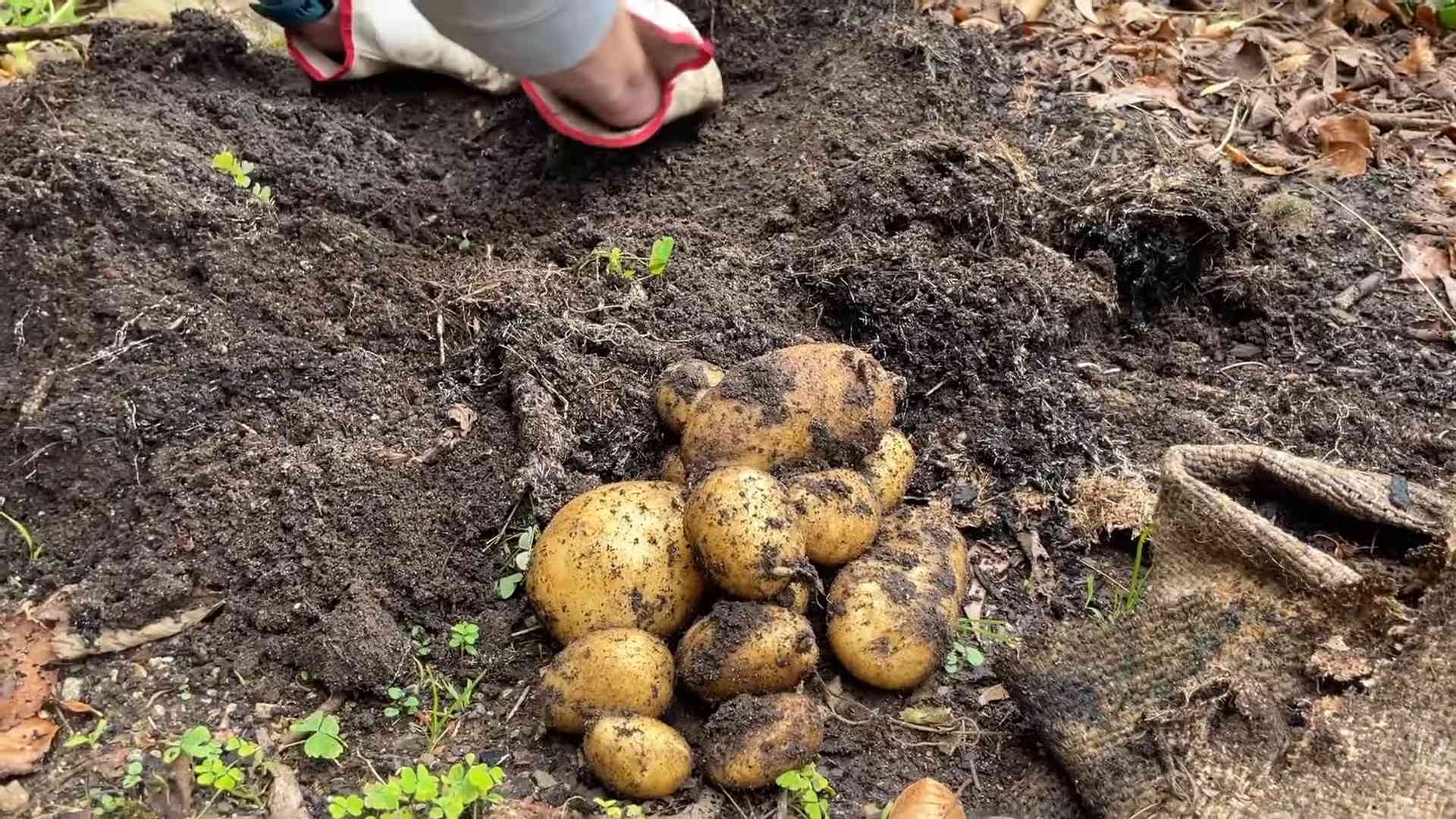
Growing Potatoes in Small Spaces: The Ultimate DIY Guide
Hey there, fellow gardening enthusiasts! Dreaming of fresh, homegrown potatoes but short on space? Don’t worry, I’ve got you covered! You don’t need acres of land to enjoy the satisfaction of harvesting your own spuds. This guide will walk you through a simple and effective method for growing potatoes in containers, perfect for balconies, patios, or even small backyards. Let’s get digging!
What You’ll Need: The Potato Powerhouse Toolkit
Before we dive in, let’s gather our supplies. This is what you’ll need to create your potato-growing haven:
* Seed Potatoes: These aren’t your regular grocery store potatoes! Seed potatoes are specifically grown for planting and are certified disease-free. You can find them at your local garden center or online. Choose a variety that suits your taste and climate. I personally love Yukon Gold for their creamy texture and all-purpose use.
* Large Container: The bigger, the better! A container at least 15 gallons in size is ideal. Think large buckets, plastic tubs, or even repurposed trash cans (make sure they’re clean and food-grade). Fabric grow bags are also a fantastic option, as they allow for excellent drainage and aeration.
* Potting Mix: Don’t use garden soil! It’s too heavy and compacts easily, hindering potato growth. Opt for a well-draining potting mix specifically formulated for containers. A mix of peat moss, perlite, and vermiculite works wonders.
* Fertilizer: Potatoes are heavy feeders, so a slow-release fertilizer is essential. Look for one with a balanced NPK ratio (nitrogen, phosphorus, and potassium) or one specifically formulated for vegetables.
* Watering Can or Hose: Consistent watering is key to happy potatoes.
* Optional:
* Chitting Tray: For pre-sprouting your seed potatoes (more on this later).
* Gloves: To keep your hands clean.
* Trowel or Small Shovel: For planting.
Section 1: Preparing Your Seed Potatoes: The Chitting Process
Chitting, or pre-sprouting, your seed potatoes gives them a head start and can result in an earlier and larger harvest. It’s not strictly necessary, but I highly recommend it!
Why Chit?
* Earlier Harvest: Sprouted potatoes emerge from the soil faster.
* Stronger Plants: The sprouts give the plants a boost.
* Increased Yield: You’re more likely to get a bigger harvest.
How to Chit:
1. Inspect Your Seed Potatoes: Look for healthy, firm potatoes with “eyes” (small buds) starting to form. If your seed potatoes are large, you can cut them into smaller pieces, ensuring each piece has at least 2-3 eyes. Let the cut pieces dry for a day or two to callous over, preventing rot.
2. Arrange in a Tray: Place the seed potatoes in a chitting tray, egg carton, or any container that allows for good air circulation. Position them with the eyes facing upwards.
3. Provide Light and Cool Temperatures: Place the tray in a cool, bright location (around 60-70°F or 15-21°C) with indirect sunlight. Avoid direct sunlight, which can dry out the potatoes.
4. Wait for Sprouts: Over the next few weeks, the eyes will start to sprout, forming short, green shoots. Aim for sprouts that are about 1-2 inches long before planting.
5. Handle with Care: Be gentle when handling the sprouted potatoes to avoid breaking off the sprouts.
Section 2: Planting Your Potatoes: From Sprout to Spud
Now that your seed potatoes are ready, it’s time to get them in the ground (or rather, the container!).
1. Prepare Your Container: Fill the container with about 4-6 inches of potting mix. Mix in a slow-release fertilizer according to the package instructions.
2. Plant the Seed Potatoes: Place the sprouted seed potatoes on top of the soil, with the sprouts facing upwards. Space them evenly if you’re planting multiple potatoes in one container. For a 15-gallon container, I usually plant 2-3 seed potatoes.
3. Cover with Soil: Gently cover the seed potatoes with another 4-6 inches of potting mix.
4. Water Thoroughly: Water the container well until the water drains out of the bottom. This helps settle the soil and encourages root growth.
5. Place in a Sunny Location: Potatoes need at least 6-8 hours of sunlight per day. Choose a sunny spot on your balcony, patio, or in your garden.
Section 3: Hilling Your Potatoes: The Secret to a Bountiful Harvest
Hilling is a crucial step in growing potatoes in containers. It encourages the plant to produce more potatoes along the stem.
What is Hilling?
Hilling involves gradually adding more soil to the container as the potato plant grows. This buries the stem, which then produces more roots and, consequently, more potatoes.
1. Wait for Growth: Once the potato plants have grown about 6-8 inches tall, it’s time to start hilling.
2. Add More Soil: Add a few inches of potting mix around the base of the plants, burying the lower part of the stem. Leave the top few inches of leaves exposed.
3. Repeat the Process: Continue hilling every 2-3 weeks as the plants grow taller. Each time, add a few more inches of soil until you reach the top of the container.
4. Water After Hilling: Water the container thoroughly after each hilling to settle the soil.
Section 4: Caring for Your Potato Plants: Watering, Fertilizing, and Pest Control
Proper care is essential for healthy potato plants and a good harvest.
1. Watering: Potatoes need consistent moisture, especially during tuber formation. Water deeply whenever the top inch of soil feels dry to the touch. Avoid overwatering, which can lead to root rot.
2. Fertilizing: Continue to fertilize your potato plants every few weeks with a balanced fertilizer or one specifically formulated for vegetables. Follow the package instructions for application rates.
3. Pest Control: Keep an eye out for common potato pests like aphids, potato beetles, and flea beetles. Inspect your plants regularly and take action if you spot any pests. You can use insecticidal soap, neem oil, or handpick the pests off the plants.
4. Sunlight: Ensure your potato plants receive at least 6-8 hours of sunlight per day. If you live in a very hot climate, you may need to provide some afternoon shade to prevent the plants from scorching.
5. Monitor for Diseases: Watch out for signs of diseases like early blight and late blight. These fungal diseases can damage your potato plants and reduce your harvest. If you spot any signs of disease, remove the affected leaves and treat the plants with a fungicide.
Section 5: Harvesting Your Potatoes: The Grand Finale
The moment you’ve been waiting for! Harvesting your homegrown potatoes is incredibly rewarding.
1. When to Harvest: The timing of your harvest depends on the potato variety and your growing conditions. Generally, potatoes are ready to harvest when the plants start to flower or when the foliage begins to turn yellow and die back.
2. Test Harvest: To check if your potatoes are ready, gently dig around the base of one plant and feel for the size of the potatoes. If they’re the size you want, it’s time to harvest!
3. Harvesting: Carefully tip the container onto its side and gently remove the soil, being careful not to damage the potatoes. You can also use a trowel or small shovel to dig around the plants and lift the potatoes out of the soil.
4. Curing: After harvesting, cure your potatoes by spreading them out in a cool, dark, and well-ventilated place for about a week. This helps to toughen the skins and prevent rot.
5. Storage: Store your cured potatoes in a cool, dark, and dry place. A root cellar is ideal, but a basement or garage can also work. Avoid storing potatoes near apples or onions, as they release gases that can cause the potatoes to sprout.
Troubleshooting Tips: Common Potato Problems and Solutions
Even with the best care, you might encounter some challenges along the way. Here are some common potato problems and how to fix them:
* Small Potatoes: This could be due to insufficient watering, lack of fertilizer, or overcrowding. Make sure you’re watering regularly, fertilizing every few weeks, and not planting too many seed potatoes in one container.
* Green Potatoes: Green potatoes contain solanine, a toxic compound that can cause illness. This happens when potatoes are exposed to sunlight. Always hill your potatoes properly to keep
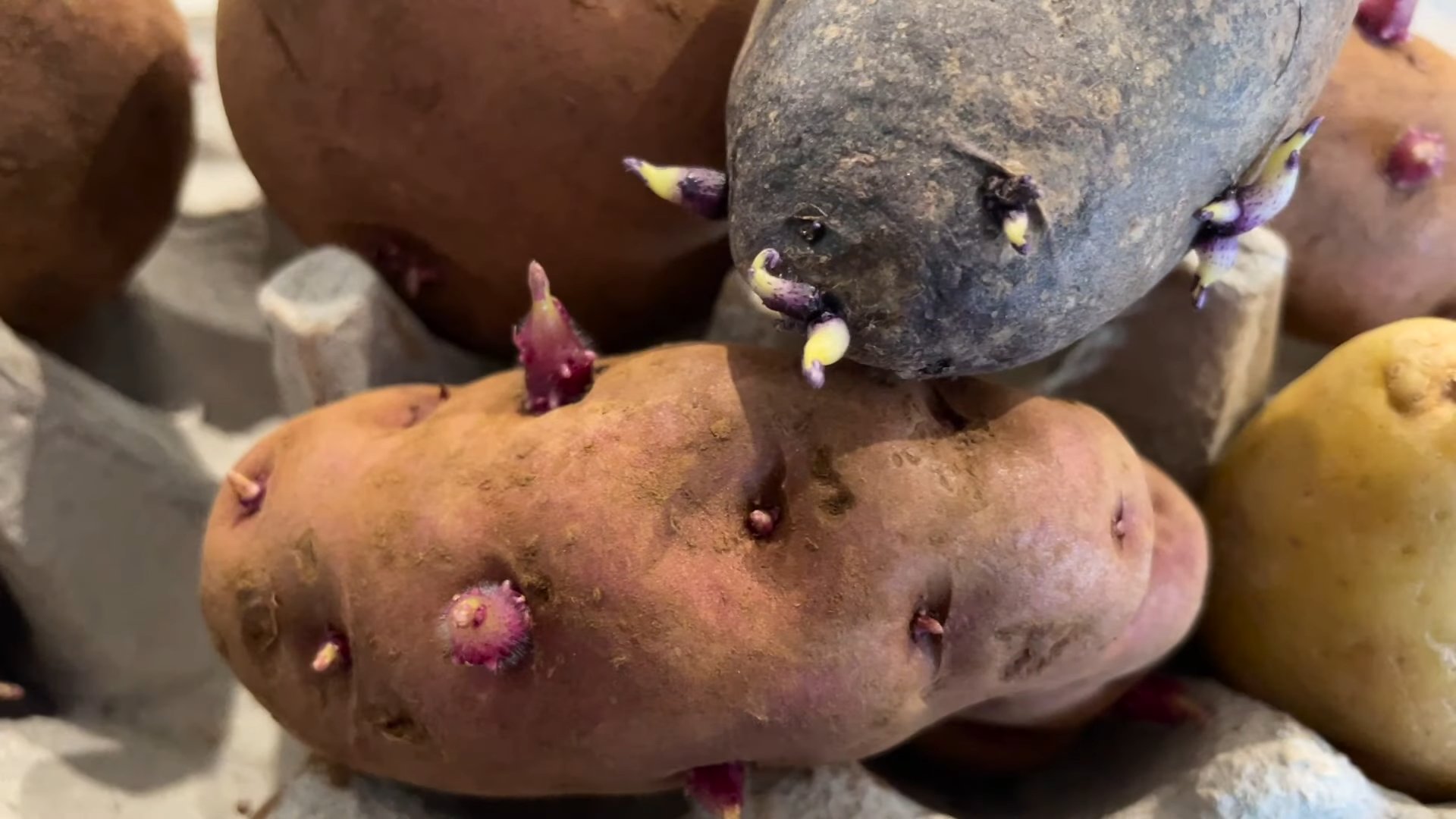
Conclusion
So, there you have it! Growing potatoes in small spaces is not only achievable, but it can also be incredibly rewarding. We’ve explored a simple, effective DIY trick that transforms limited areas – balconies, patios, even small backyards – into thriving potato patches. Forget the sprawling fields; with this method, you can enjoy the satisfaction of harvesting your own homegrown potatoes, bursting with fresh flavor, right outside your door.
Why is this DIY potato growing trick a must-try? Because it democratizes gardening. It removes the barrier of needing vast land, making fresh, homegrown produce accessible to everyone, regardless of their living situation. It’s also an incredibly efficient use of space. Vertical gardening, as we’ve discussed, maximizes yield in a minimal footprint. Plus, it’s a fantastic learning experience, connecting you to the natural world and teaching you about the life cycle of plants.
But the benefits don’t stop there. Homegrown potatoes taste significantly better than store-bought varieties. They haven’t traveled long distances, haven’t been stored for extended periods, and haven’t been treated with preservatives. You get pure, unadulterated potato goodness. Imagine the creamy mashed potatoes, the crispy roasted potatoes, the hearty potato salads – all made with potatoes you nurtured from seed to harvest.
Ready to take your potato growing to the next level? Consider these variations:
* Experiment with different potato varieties: From Yukon Golds to Russets to fingerling potatoes, each variety offers a unique flavor and texture. Try growing a mix to discover your favorites.
* Amend your soil: While the basic soil mix we discussed is a great starting point, you can further enrich it with compost, worm castings, or other organic amendments to boost nutrient levels.
* Companion planting: Plant herbs like basil or rosemary near your potato plants to deter pests and enhance flavor. Marigolds are also excellent companions for their pest-repelling properties.
* Succession planting: Stagger your planting times to ensure a continuous harvest throughout the growing season. Plant a new batch of seed potatoes every few weeks to extend your potato supply.
* Container variations: While grow bags are ideal, you can also use large buckets, trash cans (with drainage holes), or even repurposed tires. Just ensure the container is large enough to accommodate the growing potato plants.
This DIY potato growing trick is more than just a gardening technique; it’s an invitation to connect with nature, to cultivate your own food, and to experience the joy of harvesting the fruits (or rather, the tubers) of your labor. It’s a sustainable, rewarding, and delicious way to enhance your life, one potato at a time.
So, what are you waiting for? Grab some seed potatoes, gather your supplies, and get growing! We’re confident that you’ll be amazed by the results. And once you’ve harvested your first crop of homegrown potatoes, we’d love to hear about your experience. Share your photos, tips, and stories in the comments below. Let’s build a community of small-space potato growers and inspire others to embrace the joy of homegrown food. Happy growing!
Frequently Asked Questions (FAQs)
What kind of potatoes are best for growing in small spaces?
Generally, smaller potato varieties like fingerling potatoes or new potatoes are excellent choices for container gardening. They tend to mature faster and produce a good yield in a limited space. However, you can successfully grow larger varieties like Yukon Gold or Russet potatoes in containers, provided you use a sufficiently large container (at least 20 gallons) and provide adequate support for the plants. Experimenting with different varieties is part of the fun!
How much sunlight do my potato plants need?
Potatoes need at least six to eight hours of direct sunlight per day to thrive. Choose a location for your container garden that receives ample sunlight. If you live in a particularly hot climate, some afternoon shade can be beneficial to prevent the plants from overheating. If you don’t have access to enough natural sunlight, you can supplement with grow lights.
How often should I water my potato plants?
Water your potato plants regularly, especially during hot and dry weather. The soil should be consistently moist but not waterlogged. Check the soil moisture by sticking your finger about an inch deep into the soil. If it feels dry, it’s time to water. Avoid overwatering, as this can lead to root rot.
What kind of soil should I use for growing potatoes in containers?
A well-draining potting mix is essential for growing potatoes in containers. A mix of equal parts potting soil, compost, and perlite or vermiculite is a good starting point. The compost provides nutrients, while the perlite or vermiculite improves drainage and aeration. Avoid using garden soil, as it can be too heavy and compact for container gardening.
How do I know when my potatoes are ready to harvest?
The timing of your harvest will depend on the potato variety and the growing conditions. Generally, potatoes are ready to harvest when the foliage starts to turn yellow and die back. You can also gently dig around the base of the plant to check the size of the potatoes. If they are the size you desire, you can harvest them. For “new potatoes,” you can harvest them earlier, when they are smaller and more tender.
What are some common pests and diseases that affect potato plants?
Common pests that can affect potato plants include aphids, potato beetles, and flea beetles. Diseases include early blight, late blight, and potato scab. Regularly inspect your plants for signs of pests or diseases. You can control pests with insecticidal soap or neem oil. To prevent diseases, ensure good air circulation around the plants and avoid overwatering. Using certified disease-free seed potatoes is also crucial.
Can I reuse the soil from my potato containers?
It’s generally not recommended to reuse the soil from your potato containers for growing potatoes again in the same container the following year. This is because potato plants can deplete the soil of nutrients and leave behind pathogens that can affect future crops. However, you can reuse the soil for other plants that are not susceptible to the same diseases. Alternatively, you can amend the soil with compost and other organic matter to replenish nutrients and improve its structure.
How do I store my harvested potatoes?
Store your harvested potatoes in a cool, dark, and dry place. A root cellar is ideal, but a basement or garage can also work. Avoid storing potatoes in the refrigerator, as this can cause them to develop a sweet taste. Properly stored potatoes can last for several months.
Is it possible to grow potatoes indoors?
While it’s possible to grow potatoes indoors, it can be challenging to provide them with the necessary sunlight and growing conditions. If you want to try growing potatoes indoors, you’ll need to use grow lights and ensure that the plants receive at least 12 hours of light per day. You’ll also need to provide adequate ventilation and humidity.
What is “hilling” and why is it important when growing potatoes?
Hilling is the process of adding more soil around the stems of the potato plants as they grow. This encourages the plants to produce more potatoes along the buried stems. As the potato plant grows, cover the stem with several inches of soil, leaving only the top leaves exposed. Repeat this process every few weeks until the container is nearly full. Hilling is crucial for maximizing your potato yield in a small space.

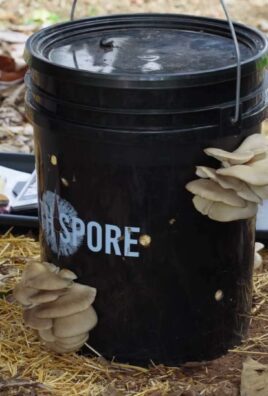
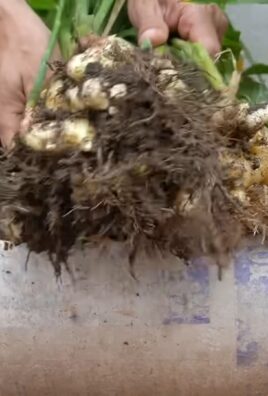
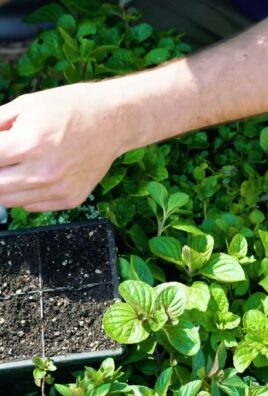
Leave a Comment